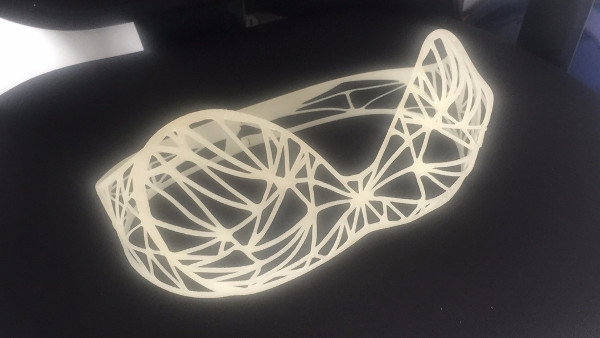Bikini sucks pollutants in seawater
American scientists are developing bikini swimsuits that can filter contaminants in seawater around the wearer.
Gizmag yesterday reported that the swimsuit is the result of research by scientists at University of California, Riverside, USA, in conjunction with Eray Carbajo design company.

The elastic frame of the bikini.(Photo: University of California, Riverside).
The frame of the swimsuit is networked, made of elastic material and uses 3D printing technology, which can be adjusted according to the wearer's body curve. Network frame coverage is an insert sheet made of opaque colored material called Sponge.
Sponge originates from heated sugar cane, does not absorb water and is capable of absorbing harmful contaminants well. Sponge can absorb up to 25 times as much pollutant as its weight without soggy.

Inserts made from Sponge material.(Photo: University of California, Riverside).
Contaminants are stored in the pores inside the material and do not contact the skin. The only way to release pollutants is to heat Sponge at a minimum temperature of 1,000ºC. The wearer can do this 20 times, then the absorbing capacity of the insert will begin to subside.
According to Cengiz Ozkan, the scientist who led the research, Sponge was originally developed to purify oil spills or desalinate seawater. Ozkan said their plan is to produce more thighs and bikini swim pants from Sponge . The researchers also hope that its water permeability can be applied to aircraft and satellite paints.
- The birth history of the bikini
- France gives birth to a smart bikini
- Roofs absorb pollutants
- Men who watch women wear bikini like
- How to purify fresh water from seawater is simple, cheap and without electricity
- The tick sucks dead blood stuck in amber 100 million years
- Marshall Islands - Bikini Atoll
- Nitrogen pollutants in seawater threaten the atmosphere
- Melting ice releases toxins from the 20th century
- The amount of oxygen in the seawater is decreasing significantly
- Serious poisoning because of seawater containing oil spills
- The fate of the island tried 23 nuclear bombs
 Is the magnetic North Pole shift dangerous to humanity?
Is the magnetic North Pole shift dangerous to humanity? Washington legalizes the recycling of human bodies into fertilizer
Washington legalizes the recycling of human bodies into fertilizer Lightning stone - the mysterious guest
Lightning stone - the mysterious guest Stunned by the mysterious sunset, strange appearance
Stunned by the mysterious sunset, strange appearance